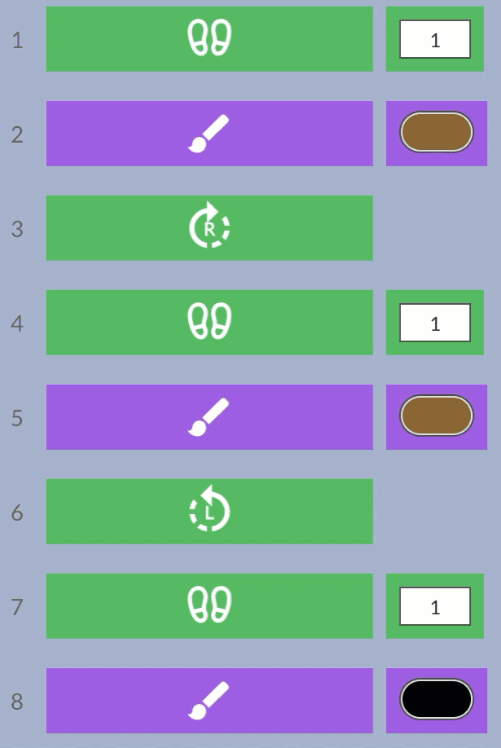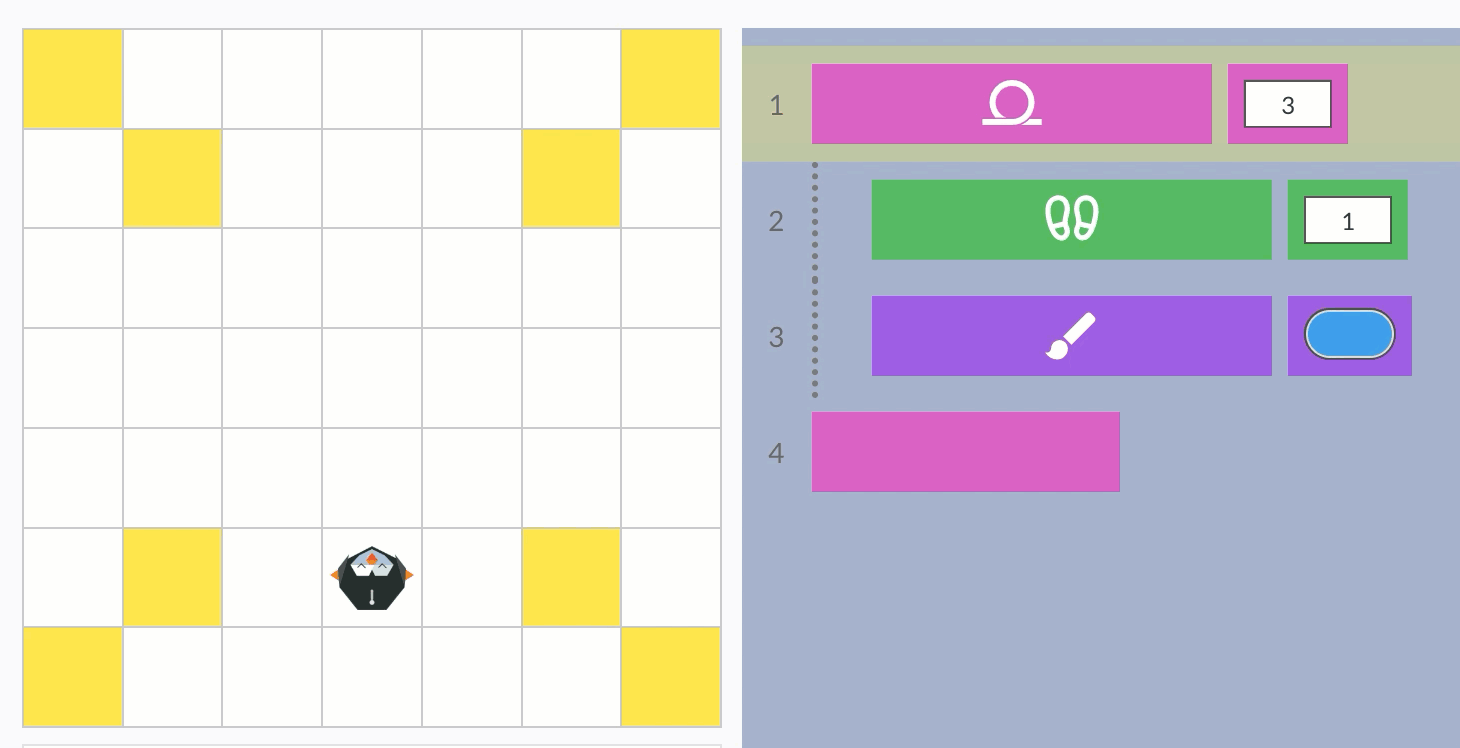4th Grade
4th Grade Curriculum Overview
Review your grade-level pathway ✅
Fourth graders learning computer science with 9 Dots will focus on learning functions, a powerful coding tool that allows students to write reusable, efficient code.
In this course, students will first cover the basics of functions through the Functions I module. Then, they will continue with the Functions II module in which they will build on their knowledge of functions to write more complex programs. Students will also learn about loops in this module, and how to nest loops inside of functions. Students will finish the course with a project module called MonsterQuest. In this project, students will use the skills they’ve learned in the previous two modules to design and code a “pixel monster” to compete in a code review game.
Below are in-depth descriptions of each 10-lesson module, with links to the full Scope and Sequence for each.
| Module E1: PixelBots Functions | Students are introduced to functions and learn how to define and call functions to solve challenges in PixelBots. Students will practice decomposing shapes using the Break It Down strategy to code candy-themed challenges with functions. Students will also learn how to organize their code with their main code at the top and all function definitions at the bottom separated with line breaks. By the end of this module, students will have a strong foundational knowledge of how functions work and why they are useful. (Scope and Sequence) |
| Module E2: PixelBots Functions II | Students will advance their knowledge of functions in PixelBots by learning skills and strategies to write code with multiple functions and nested loops. Students will practice think-aloud and decomposition to code video game-themed challenges with functions. By the end of this module, students will have a stronger foundational knowledge of how functions and loops can be used together to write reusable and readable code. (Scope and Sequence) |
| Module E3: PB Project MonsterQuest | Students plan and code a PixelMonster, then compete in a Code Review game. The skills they practiced in the previous modules will culminate in this final project. By the end of MonsterQuest, students will have decomposed a colorful and thoughtful design, and have written code with functions, loops, comments, white spaces, and logical naming conventions for readability. Students will be consistently checking in with a partner to discuss their progress on code requirements. During the MonsterQuest game, students will receive similar code requirements in the form of Challenge Cards. By passing the requirements, students can advance in the game. (Scope and Sequence) |
Learn your core Computer Science (CS) Concepts ✅
Sequencing (E1, E2)
A sequence is a set of steps carried out in order, and sequencing in computer science is the process of writing or following instructions in order.
This video will walk you through the solution to the writing challenge above:
Functions (E1, E2)
A function is code you can call over and over again that performs a specific task. Functions are useful because they allow us to reuse code in different parts of a program.
On the right, the function “rainbow” is defined on lines 6-12. When the rainbow function is called on lines 1 and 4, the program will run the code inside the definition.
Try it out!
This video will walk you through the solution to the writing challenge above:
Loops (E2)
A loop is a block of code that repeats a sequence. Loops are especially useful because they allow us to repeat sequences of code without rewriting the blocks multiple times.
The loop to the right moves PixelBot forward and then paints the cell blue. This happens three times, as indicated by the argument “3” to the right of the loop symbol.
Try it out!
This video will walk you through the solution to the writing challenge above:




